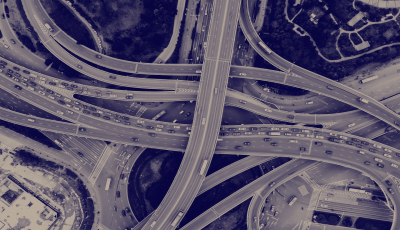2020.01.17
Here’s how a circular economy could change the world by 2030
Let me share my vision of 2030.
By then, we are living in a global circular economy that has become ‘intentionally transparent’. This open mindset has released a surge in trust throughout the world’s supply chains that encourages higher visibility and greater control over responsible sourcing. We now have ethical and sustainable circular supply chains in which the rewards are shared equitably, right from local communities through to the primary consumer and beyond.
Fourth Industrial Revolution technologies such as blockchain, artificial intelligence (AI), internet of things (IoT) and nanotechnology have helped to facilitate the tracking of critical metals and minerals from mine to consumer. This transparency has heralded a ‘new normal’ in which the raw materials we use for manufacturing and construction can be traced from the moment they are extracted through to first use, re-manufacture and eventual deconstruction and reuse.
In 2030, nobody talks about the circular economy; it’s just the economy. The hard yards in increasing societal prosperity, while reducing dependence on primary materials and energy, have already been done. We wince at the grim days of the 2010s, when billions of tonnes of materials were extracted every year to meet the functional needs of society – but only a fraction was ever recycled back into our economies.
Change of era
People in 2030 will celebrate the initiatives that were launched to drive action towards net-zero carbon emissions from heavy industry and the heavy-duty transport sector. Improvements in sustainable battery supply chains enabled the transport and power industries to reduce emissions by 30%, putting economies back on track to meet the goals of the Paris Agreement.
Looking back, few categories benefited more from the vision of our politicians and entrepreneurs than the batteries industry. The cell-powered revolution created 10 million jobs, added $150 billion to the global economy and provided electricity to 600 million people. This was indeed the decade of the battery.
Rapidly falling technology costs created major opportunities to reduce waste. The internet of things started to keep track of valuable products and materials much more cheaply than in the past, radically increasing opportunities to recover them.
We began reintegrating the economy into our planet’s system by preserving and enhancing natural capital like never before. We focused on capturing more value from existing infrastructure and ‘designing out’ the impacts of pollution, climate change, toxins and congestion. We got our act together.
Large value chains finally started taking a ‘systems approach’ to how they managed materials and waste, recognising that one company’s output is another’s input. And guess what – there’s money to be made in that.
Governments and cities spark the revolution
What was the one thing that made a difference more than anything else? Some will point to the youth movement that drove awareness and campaigned for action. Others will champion the new breakthroughs in technology that were unthinkable in 2020. In my vision, these played a part. But we would never have got here if the world’s lawmakers had stayed on the sidelines.
From Shanghai to New York, Mumbai to Brisbane, the authorities entered the arena, rather than waiting for development to run its course. They got involved – and with good reason. After all, it was the public sector and policymakers who could strongly influence industries through infrastructure investments, public transport, zoning laws, building standards and agricultural subsidies. They were able to steer outcomes at a system level. Urban planning, mobility systems and food systems managed to integrate new technologies effectively, avoiding the risk of massive structural waste.
The private sector wasn’t allowed to leave the public sector behind. The right rules were put in place to ensure that jobs were preserved, and new ones created. Governments recognised in time that the maintenance and refurbishment of products can require more human input, and so they shifted fiscal incentives towards renewables to encourage the use of labour.
Slamming the rebound
Importantly, governments recognised the threat of ‘rebound effects’ from the circular economy. Technology drives down prices, which is good news. But as relative prices decrease, consumers tend to use more individualised transport, floor space and food. In other words, the less stuff costs, the more we want to use, eat and waste it. Policymakers acted quickly to avoid the potential environmental ricochet caused by increased prosperity.
National states integrated these new technologies and business models into their economy in a way that maximized the value extracted from asset and material stocks. Instead of rusting away into ghost towns, cities became green and self-sustaining habitats for their citizens. New business models addressed much of the structural waste in mobility, food and buildings, and created new consumer choices. By increasing utilization and longevity, communities harnessed a significant economic upside that successfully avoided any negative system effects.
Regulators stopped treating waste as simply an environmental safety hazard, but rather as a source of valuable materials and products. The administrative and legal barriers to redesign, recovery, reuse and trading were eased. Incentives for waste managers encouraged adequate separation and created new markets. City halls took the lead on integrating hidden costs such as carbon and congestion into the whole-life value of infrastructure and services. Now, components are upcycled or remanufactured because it’s much easier and cheaper (and less shameful) than throwing it away.
I’m looking forward to 2030. In my vision, we’ll share an economy that is restorative and regenerative, that preserves ecosystems and increases their return over time, that creates prosperity, and that fuels growth by capturing more value from existing infrastructure and products.
Sound good? I’ll see you there.
Original publication by the World Economic Forum.




 Scan to subscribe
Scan to subscribe